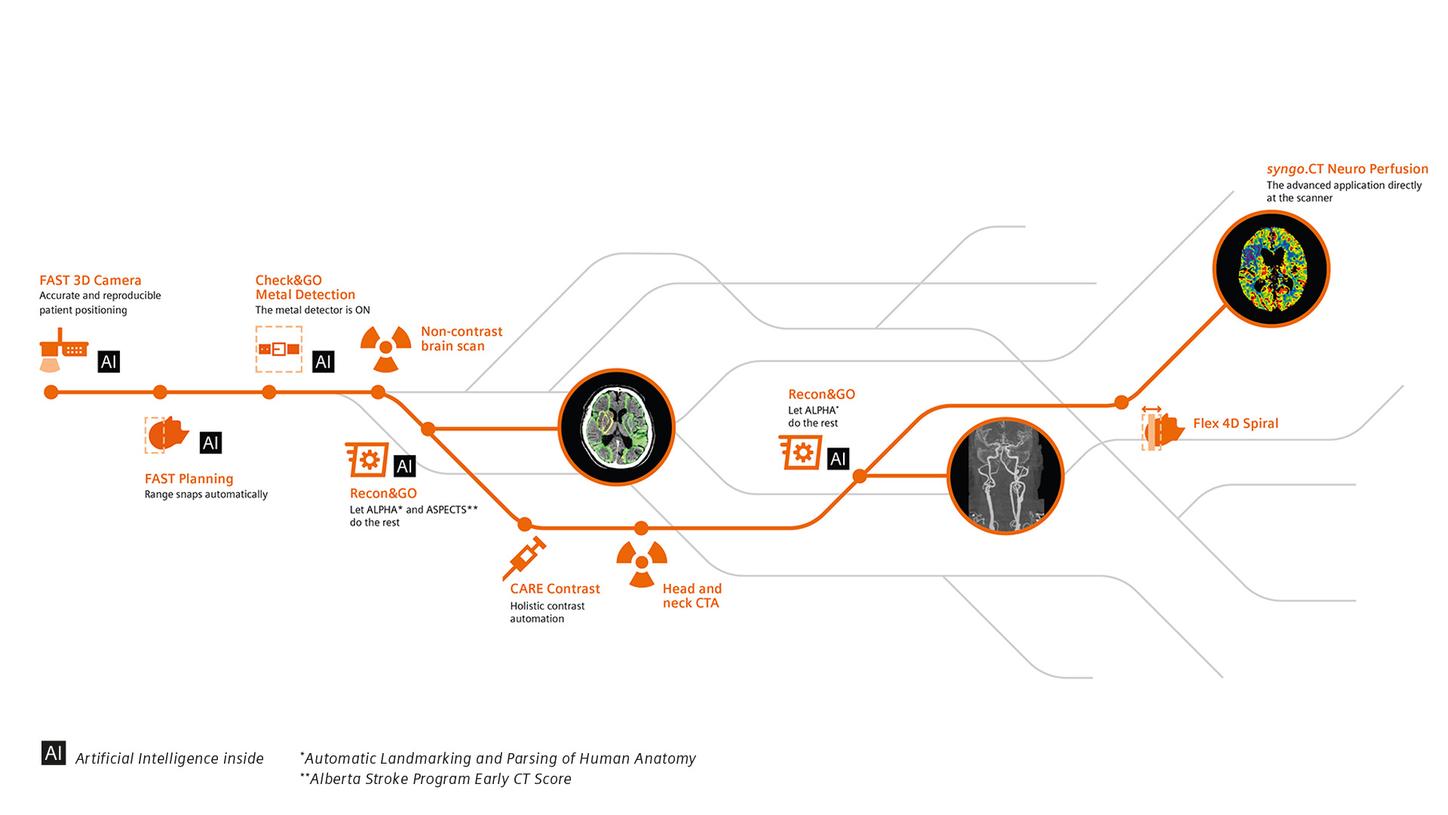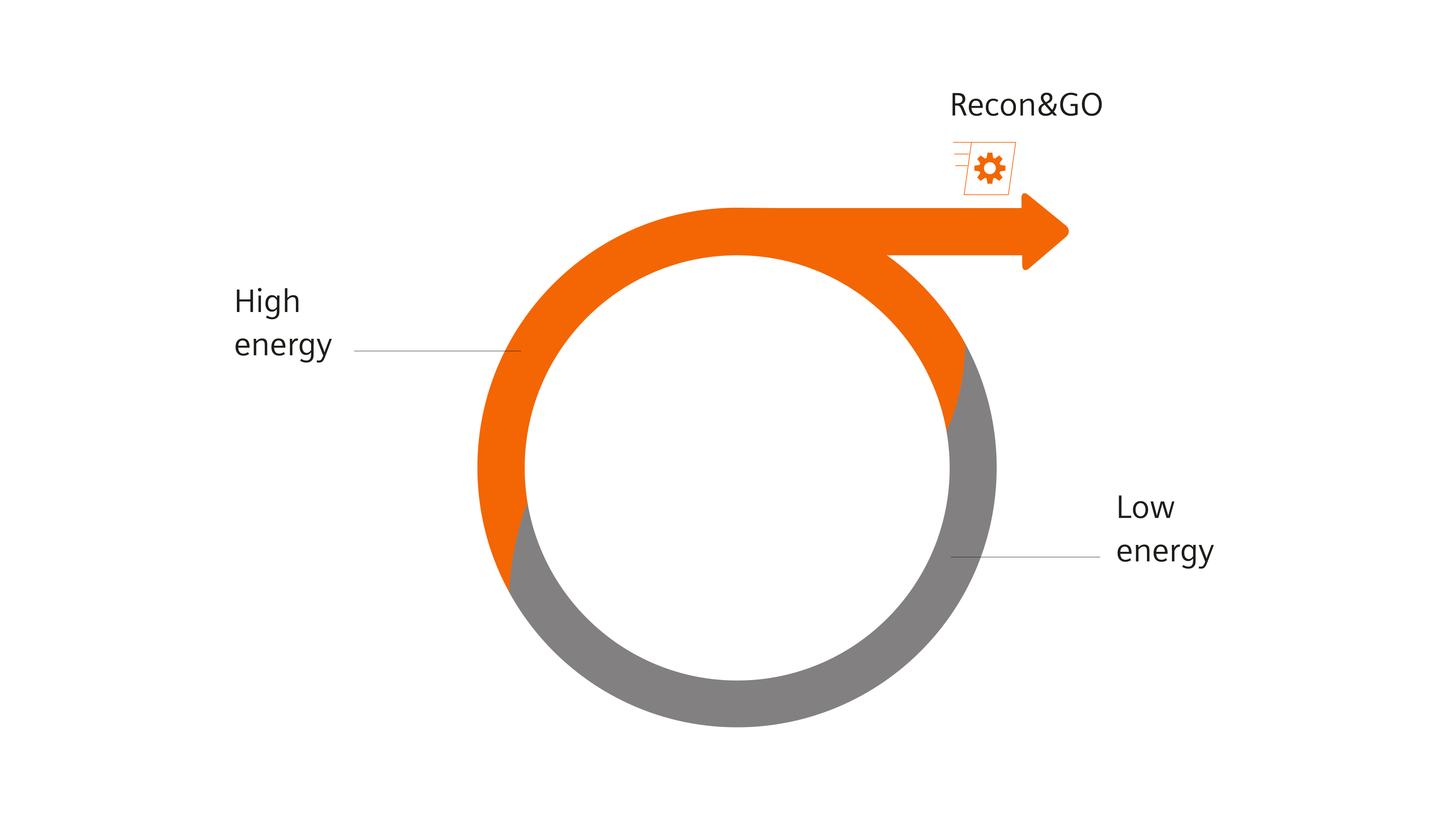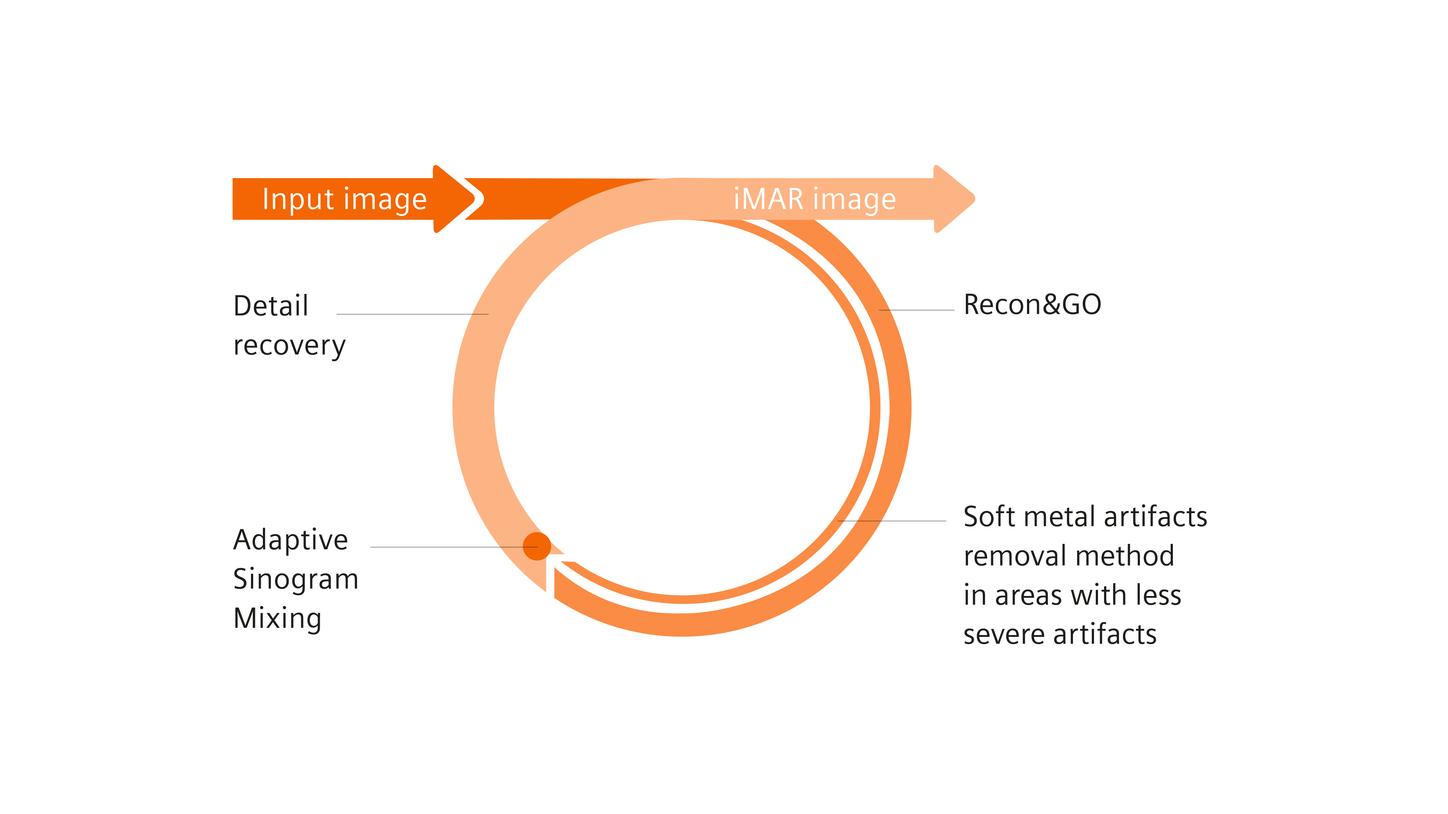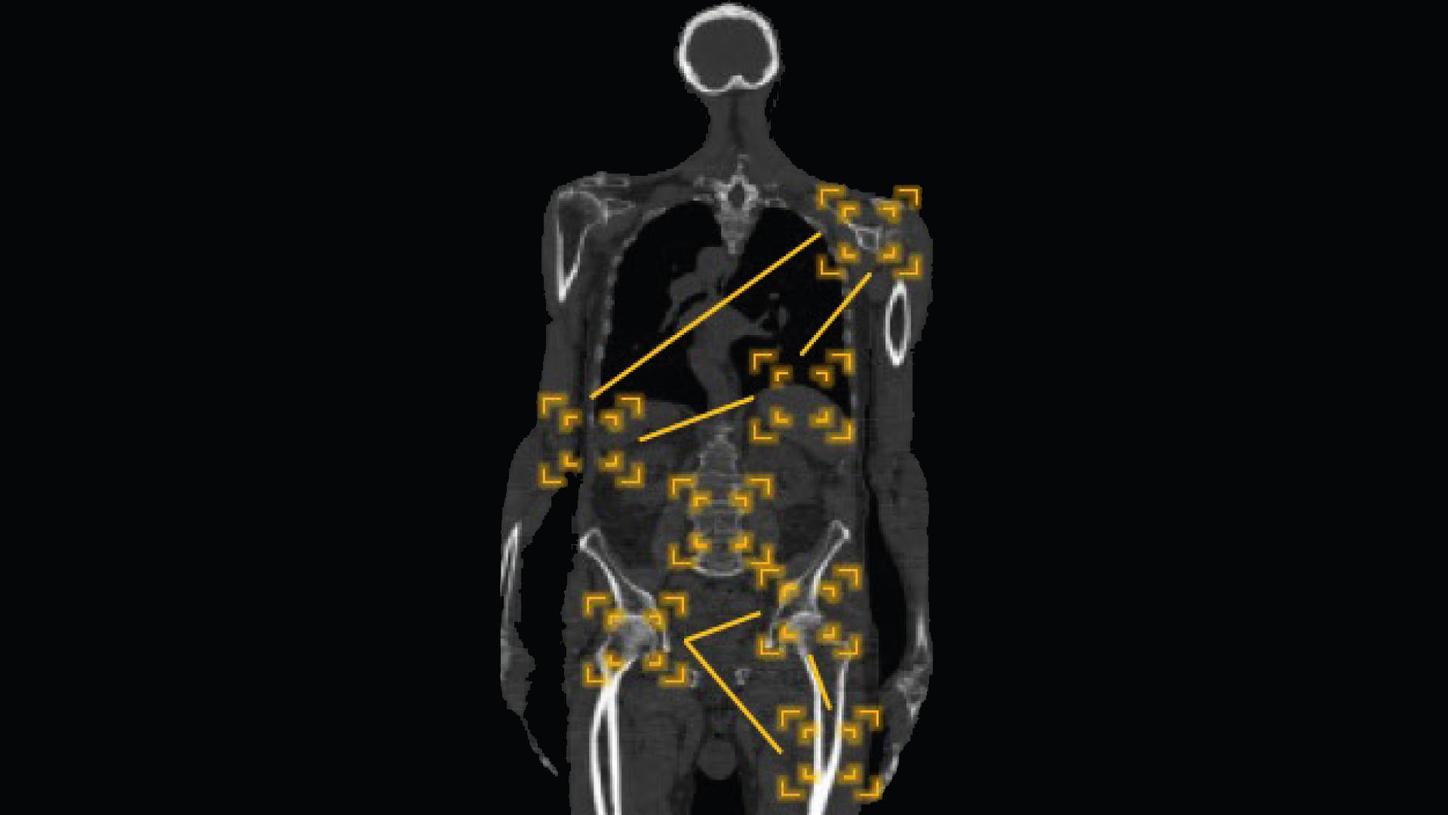
Patient pathways for guided CT imagingSOMATOM go.Top with myExam Companion
1
In clinical practice, the use of SAFIRE (sinogram affirmed iterative reconstruction) may reduce CT patient dose depending on the clinical task, patient size, anatomical location, and clinical practice. A consultation with a radiologist and a physicist should be made to determine the appropriate dose to obtain diagnostic image quality for the particular clinical task.
2
Duan X, et al., Electronic Noise in CT Detectors: Impact on Image Noise and Artifacts, AJR:201, October 2013.
3
iMAR – iterative metal artifact reduction – is designed to yield images with a reduced level of metal artifacts compared to conventional reconstruction if the underlying CT data is distorted by metal being present in the scanned object. The exact amount of metal artifact reduction and the corresponding improvement in image quality achievable depends on a number of factors, including composition and size of the metal part within the object, the patient size, anatomical location, and clinical practice. It is recommended to perform iMAR reconstruction in addition to conventional reconstruction.
4
Arenas-Jimenez J, et al. Image quality and radiation dose at routine unenhanced chest-CT using a tin filter in a new single-source CT model: Comparison with other chest-CT scans in the same patient. Poster presented at: Joint ESTI ‒ ESCR Annual Scientific Meeting 2018; May 24-26, 2018; Geneva, Switzerland.

















